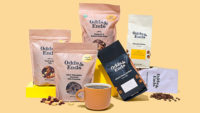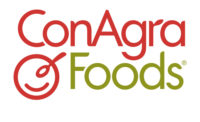Consumers to Stick with Private Label
September 21/Chicago/Business Wire -- The economy is showing glimmers of stabilizing, energy prices have receded, and food prices are increasing at a much slower rate, but the growth of private brands continues, creating strong opportunities for retailers and serving as a cautionary tale for manufacturers, according to the latest "IRI Times & Trends Report: Game-Changing Economy Taking Private Label to New Heights." The report finds private label unit share has grown 1.2 points to 22.8%, and dollar share has grown 0.7 points to 17.6% across all outlets in the past 12 months. Despite this success, two questions are emerging as the economy continues to improve: will shoppers continue to purchase private brands in ever larger quantities, and how will name-brand manufacturers respond?
"The popularity of private brands will continue as a result of several factors," says IRI Consulting and Innovation president Thom Blischok. "These products offer a very strong value proposition based on quality as well as price. In addition, shoppers will continue their frugal shopping patterns long after the recession ends. And, retailers' increasingly sophisticated private brand strategies will attract a larger and more diverse shopper base."
Many private label brands -- such as Target's Archer Farms, Safeway's O Organics and Supervalu's Wild Harvest -- are now viewed as similar, perhaps even superior, to brand-named CPG products. In many categories, private brands are able to compete on quality as well as price, and retailers continue to increase the breadth and depth of their store-brand offerings. Kroger, for example, is growing its brands across three tiers: private brands (premium tier), banner brands (mid-tier) and value brands (value tier).
Despite remarkable strides made during the past several years, private label sales are concentrated in the hands of a relatively small number of consumers. The top 50 private label categories, representing 17% of CPG categories, account for 69% of store brand sales. As a point of comparison, the top 50 national brands represent less than half of total dollar sales. Even heavy private brand buyers allocate just 22% of their CPG budget to store brands.
As consumers continue to look at affordability through a new lens, private label penetration in categories such as toilet tissue, ice cream/sherbet and butter are seeing substantial penetration increases. However, private label is losing share in 26% of the top 100 CPG categories, with national brands entrenched in categories, such as paper towels, weight control and cat food. And, national brands are gaining ground in key categories, including dog food, sugar and frozen plain vegetables.
The IRI report recommends the following strategic action be considered regarding private label:
* Manufacturers should increase frequency of feature ad and display-based merchandising across key categories/brands with a heavy focus on affordability and unique product attributes.
* Retailers should develop best-in-class marketing, pricing and promotion strategies to ensure maximum relevance and impact among fiscally weary U.S. consumers.
* Manufacturers should evaluate partnership opportunities with key retailer partners to offer consumers solutions-based healthcare and meal solutions.
* Retailers should consider multi-tiered product development efforts to drive appeal across a broad segment of the stores' key consumer segments.
From the September 28, 2009, Prepared Foods E-dition
Looking for a reprint of this article?
From high-res PDFs to custom plaques, order your copy today!





